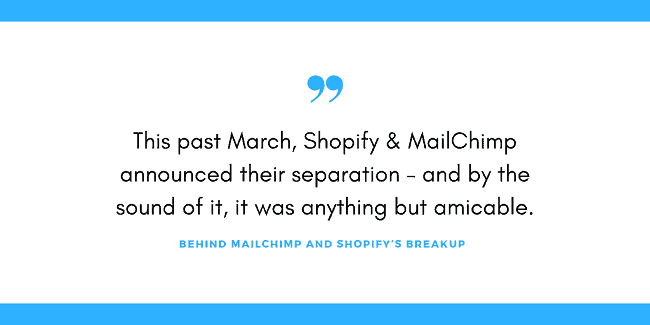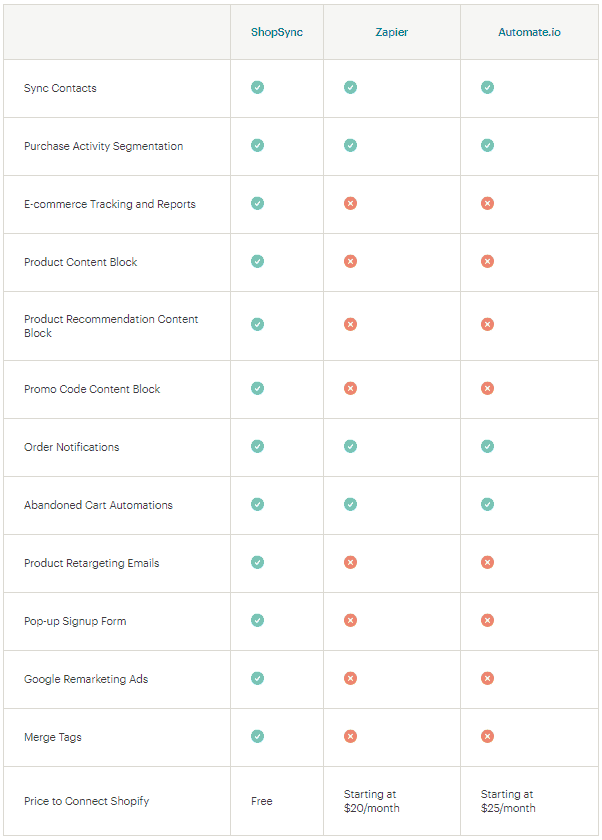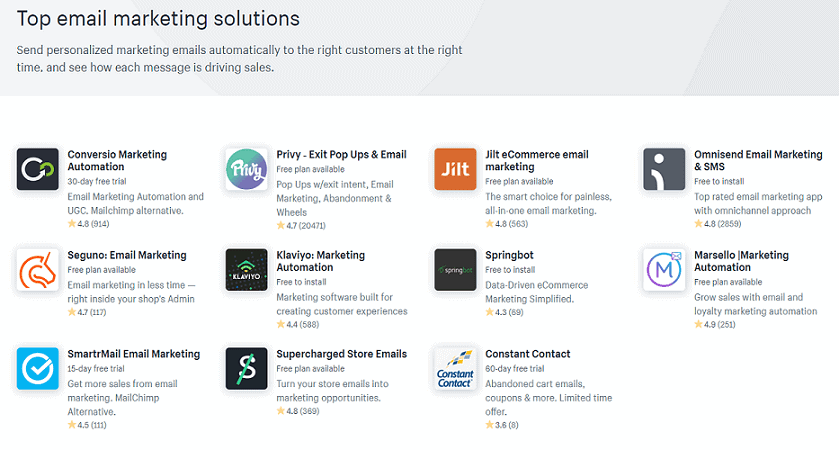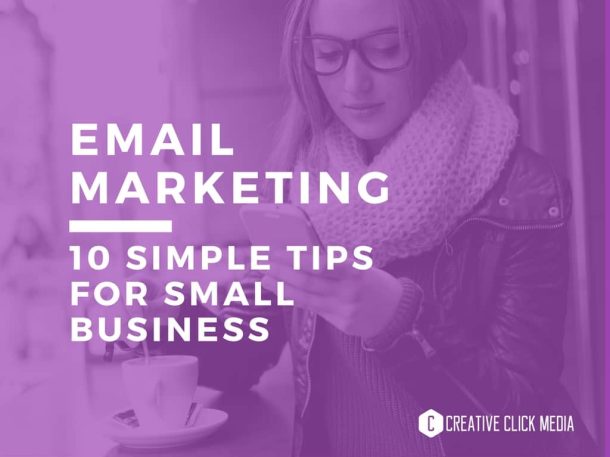There have been a number of classic couplings throughout history that seemed fated to stand the test of time.
Romeo & Juliet.
Beauty & The Beast.
Luke Skywalker & Princess Leia.
For ecommerce businesses, however, the pairing that best exemplifies “couple goals” is the integration between Shopify & MailChimp. Two of the most popular tools in ecommerce marketing joining forces to create a seamless sales experience between platforms certainly seems like a match made in heaven.
Or so we thought.
This past March, Shopify & MailChimp announced their separation – and by the sound of it, it was anything but amicable.
It’s human nature to want to pry into the details of a seemingly perfect partnership gone wrong, but a dissolution of this magnitude is much weightier for business owners who rely on both platforms to maintain their ecommerce marketing campaign.
 What Went Wrong?
What Went Wrong?
Like many messy breakups, the root cause of MailChimp and Shopify’s separation has become somewhat of a “he said, she said” situation. However, both parties agree that their inability to find middle ground regarding the privacy rights of their customers played a significant role in the severance of their partnership.
MailChimp’s integration with Shopify’s app suite provided ecommerce businesses with the opportunity to merge with MailChimp’s email platform using customer data provided through a Shopify website. Shopify’s updated security provisions set in early 2019, however, proved to be a major point of contention between the two ecommerce marketing giants.
On March 22, 2019, both MailChimp and Shopify made statements regarding the status of their separation:
“For months, we’ve been trying to work with Shopify on terms that would be fair and equitable for both of our businesses,” said MailChimp. “Throughout these negotiations, we refused to agree to terms that jeopardize our users’ privacy and require us to hand over customer data acquired outside of Shopify. […] What we’re not willing to do is automatically and retroactively share all of this data with Shopify, including data acquired outside of and not connected to the Shopify platform, without the user involved.”
Shopify, however, offered quite a different take on the situation:
“Over the past 18 months, Shopify has had growing concerns about Mailchimp’s app because of the poor merchant experience and their refusal to respect our Partner Program Agreement,” says Shopify. “It’s critical for our merchants to have accurate, complete insight into their businesses and customers, and this isn’t possible when Mailchimp locks in their data. Specifically, Mailchimp refuses to synchronize customer information captured on merchants’ online stores and email opt-out preferences. As a result, our merchants, other apps, and partner ecosystem can’t reliably serve their customers or comply with privacy legislation.”
What Does This Mean For Your Business?
As of May 12, 2019, MailChimp has been officially removed from Shopify’s app suite. If you own an ecommerce business that previously utilized both MailChimp and Shopify, this may have thrown a serious wrench in your email marketing strategy. This leaves your business with several options moving forward:
Option #1: Sync With MailChimp Manually
If you are a MailChimp loyalist running a fairly bare-bones email marketing campaign, this might be the easiest option for you. Rather than Shopify automatically sharing new customer information like names and email addresses with MailChimp, it will be your responsibility to enter that information manually. This isn’t too big of a task if your new customer acquisition is a slow drip, but this could quickly become unmanageable if you are inputting hundreds of new customers at one time.
The other notable problem with this option is the loss of abandoned cart emails. Because MailChimp and Shopify are no longer sharing customer information with one another, there is no way for MailChimp to know when to trigger an automated abandoned cart email. With upwards of 50% of opened abandoned cart emails resulting in a sale, missing out on this type of campaign could cause a significant hit to your revenue.
Option #2: Utilize a Third Party Integration Tool
Messy breakup aside, it is still possible to connect your Shopify website with your MailChimp account – though it will require a middle man. MailChimp has provided a number of third-party integration tools that can be used to indirectly reconnect the two platforms. Each tool comes with its own set of capabilities, so it will require some work on your end to determine which option is the best fit for your business.
 Option #3: Find a Shopify-Compatible Email Marketing Platform
Option #3: Find a Shopify-Compatible Email Marketing Platform
Switching to a new ecommerce website platform probably isn’t the most practical or feasible way to handle Shopify and MailChimp’s separation. For this reason, your best option might be the work with another email platform that is already connected to Shopify.
Take one look around Shopify’s app store and you will find more than 10 email marketing solutions currently available (as of 5/29/19), each with varying degrees of integration and customization. Read through their reviews and take advantage of free trials in order to find the email marketing platform best suited for your business and your customers’ needs.
 Moving On From MailChimp and Shopify’s Breakup
Moving On From MailChimp and Shopify’s Breakup
We know picking up the pieces after an unexpected breakup can be tough. We might not be able to console any broken hearts with a box of chocolates or your favorite romantic comedy, but nonetheless, we are here to help soften the blow.
The disintegration of MailChimp and Shopify’s partnership doesn’t mean your email marketing efforts need to suffer. Not sure what would be the most effective move for your ecommerce business? Reach out to a member of our team for a comprehensive run-through on what this breakup means for your business along with our recommendations moving forward.





